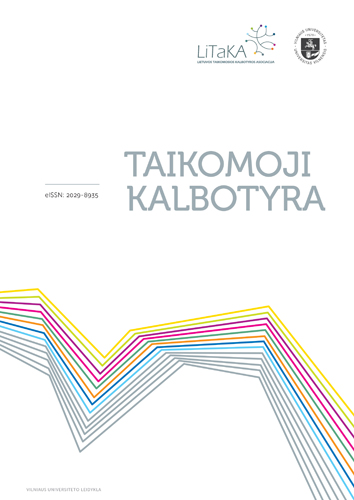Lietuviški metaforiniai teisės terminai
Lithuanian metaphorical legal terms
Author(s): Dalia GedzevičienėSubject(s): Law, Constitution, Jurisprudence, Lexis, Semantics, Baltic Languages
Published by: Vilniaus Universiteto Leidykla
Keywords: metaphorical terms; metaphor; trends of metaphoricity; legal terms; dictionary of terms; lexicography;
Summary/Abstract: The article analyses Lithuanian metaphorical legal terms, which account for about 8.8 percent of all legal terms in Lithuanian. Based on formal linguistic attributes, four main groups of metaphorical terms were identified: (1) terms with a metaphorical headword, which subsumes two groups distinguished according to the part of speech: (a) noun metaphors, e.g. įstatymo spraga ‘a gap in the law’, teisės šaltinis ‘source of the law’; (b) verb metaphors, e.g. laikytis įstatymo ‘to keep to the law’, paremti įstatymo projektą ‘to support a bill’. In this article, differently from a fairly well-established tradition of Lithuanian terminology, verb-based phrases with a special meaning are also classified as terms; (2) terms with a metaphorical subordinate constituent, e.g. sunki bausmė ‘heavy punishment’, juodoji rinka ‘black market’; (3) metaphorical expressions, e.g. Delavero efektas ‘Delaware-effect’; (4) metaphorical compounds, e.g. pilnametystė ‘full age’. The paper has identified four trends of metaphoricity in Lithuanian legal terms (1) conceptualising legal issues as things or objects (67.04 percent of all metaphorical terms), e.g. duoti parodymus ‘to give evidence’, įstatymo ribos ‘limits of law’,tuščias grasinimas ‘empty threat’; (2) conceptualising legal issues as humans or animals(18.59 percent), e.g. sąžiningas procesas ‘fair trial’, diplomatinis imunitetas ‘diplomatic immunity’; (3) conceptualising legal issues as objects or humans (12.88 percent), e.g. bylos sustabdymas ‘stay of proceedings’, aukštesnioji instancija ‘higher instance’;(4) conceptualising legal issues as some natural phenomena(1.63 percent), e.g. teisės šaka ‘branch of law’. The conceptual metaphor analysis has shown that the target domain of legal metaphors mostly includes abstract concepts referring to legally regulated human activities and relations. The most productive source domain of these metaphors includes (1) objects of the material concrete world around us, mostly things, their attributes and functions, and human actions closely linked to them, and (2) living beings with their physical and mental characteristics.
Journal: Taikomoji kalbotyra
- Issue Year: 2018
- Issue No: 10
- Page Range: 26-44
- Page Count: 19
- Language: Lithuanian

